
After a long summer break it’s common to have issues with getting your snowmobile started. This is usually more common in older machines, but any snowmobile can have problems starting. Let’s take a look at the common reasons you snowmobile won’t start and how to fix these problems and get you going in the snow.
There could be a number of reasons a snowmobile won’t start, including a bad battery, a clogged up fuel system or a dried up carburetor, among others. Most of these problems can be fixed relatively easy with a little bit of knowledge and some common hand tools.
Here are a few tools and supplies you may find useful as we go through the machine.
- Screwdriver Set – Amazon Link
- Ratchet Socket Set – Amazon Link
- Needle Nose Pliers – Amazon Link
- Fuel Siphon Pump – Amazon Link
- Fuel Lines – Amazon Link
- Digital Multimeter – Amazon Link
- Shop Towels – Amazon Link
And now, let’s get into it.
1. Weak or Dead Battery
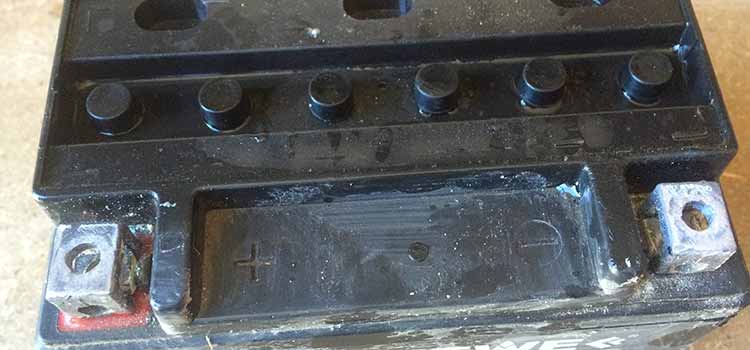
Newer models of snowmobiles are equipped with electric start, where a motor spins and cranks the engine, while most of the older sled models have a pull start mechanism. Many models have both electric start and a pull start option as a backup. Even though many can start without a battery, most newer snowmobiles do require a battery to operate all functions while running. So an important starting point is this: if your snowmobile has a battery, check it.
A good battery should have enough power to turn the engine over fairly rapidly. If you can’t get it to turn over, start by checking battery voltage with a multimeter. I’ve used this multimeter to test all my batteries without any issues for years. A fully charged battery should read 12-13 volts in its resting state. If you have this voltage but can’t get the engine to crank, you may have electrical connection issues. But chances are, the battery is either discharged or completely toast.
Fix: Recharge or Replace the Battery.
The most cost-effective thing to start with is to recharge the battery and see if it’s still any good. You can go to an auto repair shop or auto parts store in your local area and ask them to recharge the battery, but if you have a snowmobile and other vehicles, you ought to have a 12 volt battery charger at home. This all-in-one charger is compact, affordable and works great. The multimeter will come in handy in this situation to check the voltage of the battery while it’s charging or afterward.
If, after recharging the battery, your snowmobile still refuses to crank, you’ll likely need to replace the battery. Many batteries become discharged for too long a period of time, or they just plain get old and no longer have the ability to take a charge. Make sure your new battery is designed to work in cold weather and meet the cranking amp requirements of your snowmobile. This information can be found in the user manual of your snowmobile or by looking at the CA (cranking amps) and CCA (cold cranking amps) rating on the old battery.
A new battery made for snowmobiles is going to be costly, but it’s a necessary part of owning a snowmobile. I have curated a list for best batteries to put in your snowmobile, which should give you an idea about batteries and how to choose the one that’s right for your situation.
2. Old Gas
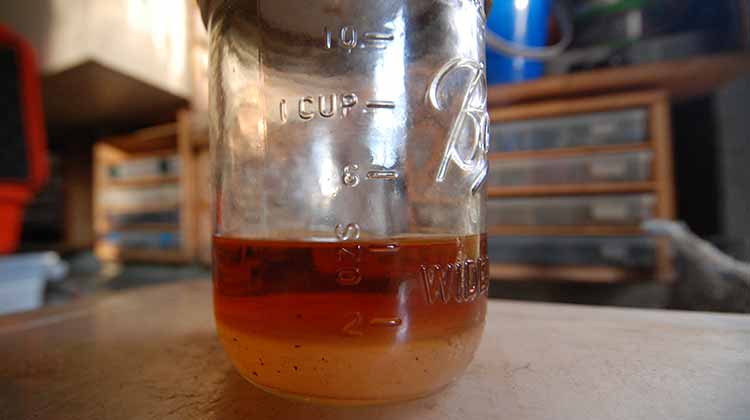
Leaving gas in a snowmobile for months at a time is probably the most common source of problems with starting and smooth running. Gas breaks down over time, and this is even more pronounced with the modern day gas that includes 10-15% ethanol.
We have a source of ethanol-free gas at a local station where I live and I will run nothing but ethanol-free gas in my snowmobiles, atv’s and all other small engines. The extra dollar or so per gallon is well worth the time and cost savings by avoiding problems with bad gas.
Whether you have ethanol or non-ethanol gas in your snowmobile, be sure to add a stabilizer to it in the spring. The most common product is called Stabil, but there are several others. These will stabilize the fuel for long periods of storage and allow it to retain its properties and avoid engine damage, residual gum, etc.
Another option to avoid these problems would be to drain your gas tank at the end of the season.
But let’s say you didn’t know better or forgot, and you’ve got old gas.
Fix: Replace the old fuel and check for any clogs
Important: Handling fuel is dangerous, so take proper care and wear safety glasses and respiratory masks to avoid inhaling hazardous fumes.
To take out all the old gas, your best option is to use the Siphon Pump that is specially designed to take out leftover fuel from fuel tanks. A good quality siphon pump can be obtained from Amazon for around $20. Here is a video from Paul Foster explaining how to use the Siphon Pump properly to empty the fuel tank.
Here’s a summary from the video:
- Get a fuel-safe container to pump out the gas from the fuel tank of the snowmobile. Place the empty container at a lower level from the fuel tank.
- Both ends of the siphon pump have a tube. Look for the markings on the pump to know which end you need to put in the gas tank of the snowmobile and which end you should put in the container. Always connect the tubes properly.
- Squeeze the pump a few times, and the gas will slowly start flowing from the gas tank to the container.
- After all the fuel is drawn into the container, take out the tubes, clean them, and put the cap on the container.
Do not ever use your mouth to siphon the fuel out of your fuel tank. It is extremely dangerous, and the hazardous fumes can seriously damage your lungs and may even suffocate you.
After emptying your fuel tank, check the gas tank and fuel lines for any gum like residuals. Clean the gas tank and fuel lines with hot water and mild detergent if necessary. After thoroughly cleaning the fuel tank and fuel lines, let these dry in a well-ventilated area. It’s always a good practice to only use the manufacturer recommended gas octane levels and avoid ethanol!
3. Damaged or Blocked Fuel Lines
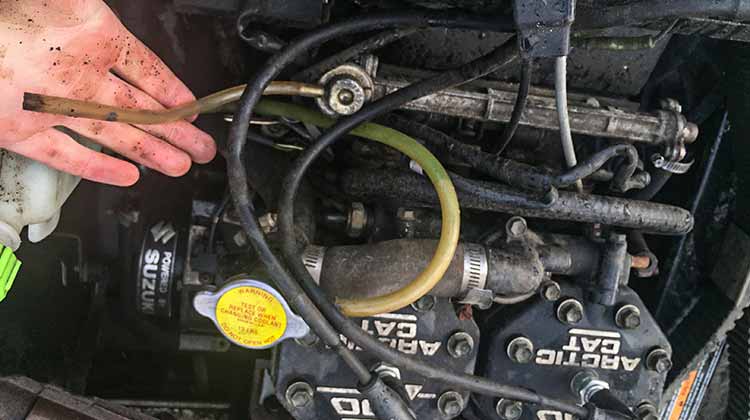
Fuel lines are an integral part of transferring fuel from the fuel tank (or fuel pump) to the engine. If your snowmobile is having a hard time starting up, misfires, or does not start up at all, chances are that your fuel lines may be blocked or damaged.
Fuel hose or fuel lines in a snowmobile are usually made up of plastic-rubber like material called Polyurethane. This material is used because it is a thermosetting polymer that does not melt or deform when heated. There are two main reasons for fuel lines failing in a snowmobile:
- Old fuel (that is trapped inside fuel lines) can form gum like residual which can cause blockage in the fuel lines.
- Your fuel lines may be worn out due to harsh weather conditions or getting bumped or rubbed between two (body or engine) parts of your snowmobile.
If your fuel lines are blocked or damaged then it will be hard for the fuel pump or carburetor to provide fuel to the engine, which will result in the snowmobile not starting up at all.
Fix: Wash or replace the damaged fuel lines
First, you will need to inspect the fuel lines by looking for any cracks or hard-bends in the fuel line. If everything looks normal from the outside, then there is a chance that your fuel lines have blocked up by gum like residuals formed by old fuel or impurities in the gas itself.
To wash the fuel lines, unclip the clamp securing fuel lines to the engine and fuel tank. Some snowmobile models use a quick-connect mechanism for fuel lines. You must refer to your service manual about disconnecting fuel lines safely and without damaging anything. Some models may have pressure fit clamps that can be unclamped using needle-nose pliers. Wash your fuel lines with warm water and use a mild detergent to soften up the blockage and remove it. You can also use an air compressor (or your mouth, but be extra careful) to blow any blocked stuff and water out.
If your fuel lines are damaged and can not be reused, you can always order new fuel lines from Amazon or visit a local dealership. Look into your service/user manual for the correct size and length that you need for your snowmobile.
4. Clogged or Damaged Air Filter
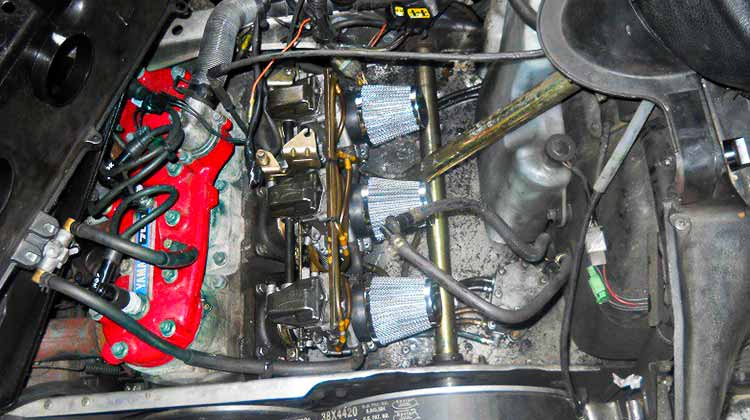
Another common but often overlooked reason for a snowmobile not starting up is a clogged or damaged air filter. Just like fuel, the air is also needed for a combustion engine to start. A damaged or clogged air filter makes it hard for the engine to suck in clean air, and causes the engine to backfire because there will be less air and more fuel inside the combustion chamber in the engine.
There are a lot of things that can cause clogging in an air filter. In snowmobiles, one of the major things is dust and debris. They can accumulate (mostly during storage) on the air filter and block it. Mice can build nests and bugs can get in and clog things up too.
Fix: Replace the air filter in your snowmobile
Eventually, all air filters need replacing after a certain period of time or use. This is the same for all automobiles. You can not clean or wash the air filter and reuse it. You must replace your air filter.
Replacement air filters are very cheap and readily available online and at local auto shops. The best part is that you can do it yourself under 5 to 10 minutes (depending on the model of your snowmobile), and you do not need to pay high maintenance fees. I recommend changing the air filter every time you service your snowmobile. This way, you don’t need to worry about forgetting it.
5. Oil Troubles
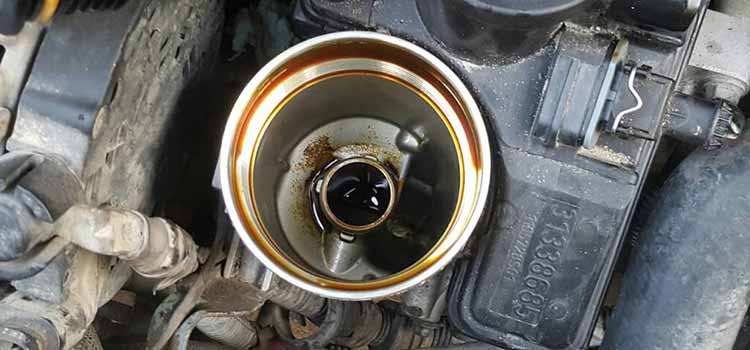
Lubricating oil is critical for proper engine function, and running without oil for much time will destroy internal engine parts. The nature of oil lubrication depends on the type of snowmobile you have. Is it a two stroke or a four stroke?
Most older snowmobiles are two strokes, while newer models can be either two or four. A two stroke engine uses oil injection, which mixes a predetermined ratio of oil into the gas as the machine runs. This oil is the proper amount to lubricate engine parts while not interfering with proper engine combustion. If you have a two stroke, there will be an oil reservoir outside of the engine. (On some really old machines before injection systems you would have to pre-mix oil into gas and put it in the gas tank, but you’re unlikely to have a sled like that). Make sure the oil reservoir is full and the oil line is not damaged, leaking or plugged. Some of these have sensors in the oil reservoir that shut off the snowmobile when the oil level gets too low. So low oil or a bad sensor could be a problem.
With four stroke engines, the oil is not burned up, but is contained within the engine, just like the oil in your car. Check the oil dipstick to make sure the level is right. If oil is low, the engine probably won’t start even though it turns over.
Fix: Check engine oil levels and the quality of engine oil, and refill
6. Dried up Carburetor
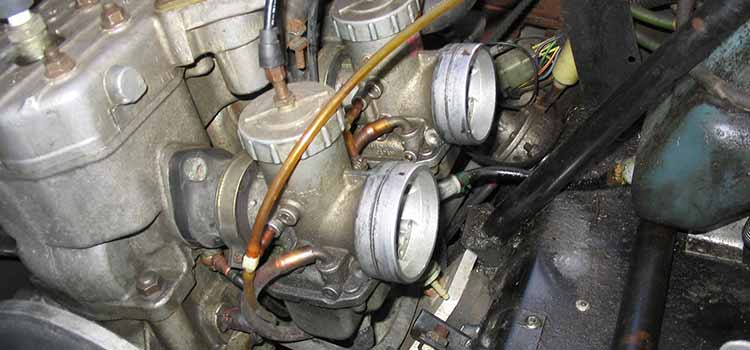
A carburetor mixes the fuel (gasoline) and fresh air in a specific ratio that is needed for combustion to happen in a combustion chamber. The carburetor can get dried up when your sled is not in use for over a month, and it can happen to every snowmobile with a carburetor. There are also adjustment valves on the carburetor, which we can adjust to change the ratio of the fuel-air mixture.
Fix: Use starting fluid or choke lever
To fix a dried up carburetor, you can use starting fluid (which is similar to gasoline) to prime the carburetor. Give it a minute to settle, then crank up the engine.
Use a starting fluid that has no other lubricants mixed in it. Locate the air intake of your engine, which is protected by the air filter. Remove the air filter and use a little spray of the starting fluid. As the starting fluids are highly flammable, it is dangerous to use on a warm/hot engine, or right after you have driven your snowmobile for some time. Do not use “too much “starting fluid as it can damage the engine.
Another way to get fuel to the engine that I’ve used is to pull out a spark plug and pour a small amount of gas in the engine. This should get things starting, and hopefully prime up the system again.
At this point, you’ve probably already used the choke to help start your snowmobile, but in case you skipped it, here’s a recap of how the choke works. The choke lever restricts the flow of air so relatively more fuel gets into the engine, giving you a richer mixture of air and fuel. It helps the combustion process during a cold start. To use the choke lever, pull up the choke lever and crank up the engine. As soon as the engine starts and begins to run smoothly, push the choke lever down. By over choking, you can flood your engine.
7. Faulty Fuel Pump

First, you have to check if your snowmobile uses a vacuum fuel pump or electronic fuel pump. Some snowmobiles use a carburetor, which has a vacuum fuel pump built into it. It works by the vacuum generated by the compression of the engine. The vacuum operates a diaphragm in the fuel pump to release (or pump) fuel (gas).
The snowmobiles that run on EFI (electronic fuel injection) system use electric fuel pumps. In this system, there are two components: a fuel pump and a motor that drives the fuel pump. The fuel pump motor has two terminals: positive and ground/negative terminal. When you press the push start button or turn on the ignition, the power is provided to the fuel pump, which supplies fuel (or gas) form the fuel tank to the fuel injector.
Usually, a fuel injection system breaks when there is something stuck in the pump or the hose (connecting the pump to the fuel tank) itself. It could be impurities in fuel or not using the manufacturer’s recommended fuel.
These are the three most common signs that tell if you have a bad or malfunctioning fuel pump:
- The snowmobile engine is cranking but not starting.
- The snowmobile frequently loses power.
- The snowmobile loses power when you drive from a dead stop.
Consult the user manual to know which fuel injection system do you have. You can just search the model of your snowmobile (with the phrase “fuel injection system”) on the internet to get the related information.
Fix: Check for fuel pump fuse or replace the fuel pump
If you have a vacuum fuel pump (the one which works with a carburetor), the first thing you got to check is the vacuum line that’s connected to the crankcase. If the vacuum hose has any cracks, leaks, damage, or if it has loose clamps, it will cause the vacuum not to form inside, and the fuel pump will not work as it should. If the vacuum hose is in good shape, then disassemble the fuel pump and inspect it for any blockage, cracks, or leakage. The best and most reliable option is to replace the faulty vacuum fuel pump with a new one. Cost depends on the model of your snowmobile, but shouldn’t be more than $60.
If you have an EFI system in your snowmobile, the pump motor should be working properly in order for the fuel pump to work. Sometimes, the terminals get coated with dirt and carbon which make the electrical connection (between fuel pump and the battery) weak. Make sure the terminals of the fuel pump motor are clean and free from any carbon, rust or dirt and connected properly to the wires coming from the battery or electrical system. Also check for any inline fuse on the positive wire or the fuse box. If the fuse is blown, simply replace it with a fuse of the same amp level.
You should also check the electrical fuel pump wires and make sure they are not damaged or worn out. Sometimes a wire gets rubbed between metal parts and gets damaged. If the EFI motor still doesn’t work as it should, then consider replacing it.
If the motor is working fine and the pump is not working, then replace the pump. The pump is a sealed chamber that cannot be repaired.
8. Faulty ignition system
The ignition system has three main parts: ignition coil, magnet coil, and spark plugs. The magnet coil or magneto has two coils (primary and secondary). The magneto (magnet coil) produces high voltages which are connected to spark plugs for them to ignite the fuel and air mixture in the combustion chamber.
These are some common symptoms of faulty ignition system:
- Engine backfiring when driving.
- Engine misfiring when on a complete stop or driving.
- Engine stalling when driving from a complete stop.
- Engine losing power when letting up on acceleration.
- Decreased fuel economy.
- Engine having a hard time starting up.
Fix 1: First Check spark plugs and plug caps

The first, (and most obvious) thing to check is the spark plugs. To get access to the spark plugs, first, remove the engine hood and look for the spark plug caps. They look like black rubberized caps with thick wires attached to them. Now there is a slight chance that maybe the high voltage wires (connecting to spark plug caps) may have gotten loose and not provide good contact with the plug. Unscrew the plug cap from the wire and blow on it to remove any dirt and debris. There is a small rubber grommet that helps keep the water out of the plug cap. Reconnect the wire to the plug and install the rubber grommet you removed earlier.
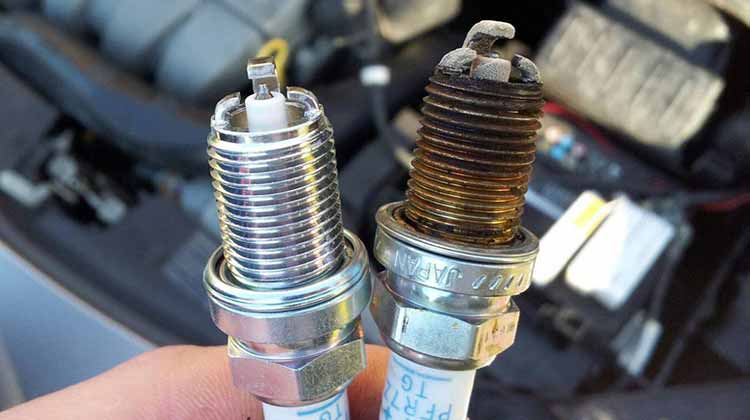
Now we need to check the spark plugs themselves. All you will need is a socket wrench and spark plug socket. 14mm spark plug thread uses a 13/16 inch socket, and 18mm spark plug thread uses a 1-inch socket. Now that you have taken the spark plugs out of your snowmobile, look for carbon residue between the spark gap. Cleaning the spark plug may work for now, but it won’t be reliable in the future. Also, there is a chance that you could mess with the gap when cleaning. My advice would always be to replace all of the spark plugs with good quality brand new ones. You could also use spark plugs with platinum or iridium tips. These plugs are expensive but last a long time.
Fix 2: Check ignition coils and replace
The best way to check the magneto and the ignition coil is by using a multimeter in 10 megaohms (mΩ) range. An auto-range multimeter is very handy when working on automotive stuff. They have gotten very cheap and readily available on Amazon. Here’s the one that I use and like. Every ignition coil and magneto have different resistance values in defined ranges. If the value of your ignition coil lies in between the defined range, then your ignition coils are good. If not, then you must replace them. Look into the service manual of your snowmobile or the internet to find the resistance values of your magneto and ignition coils.
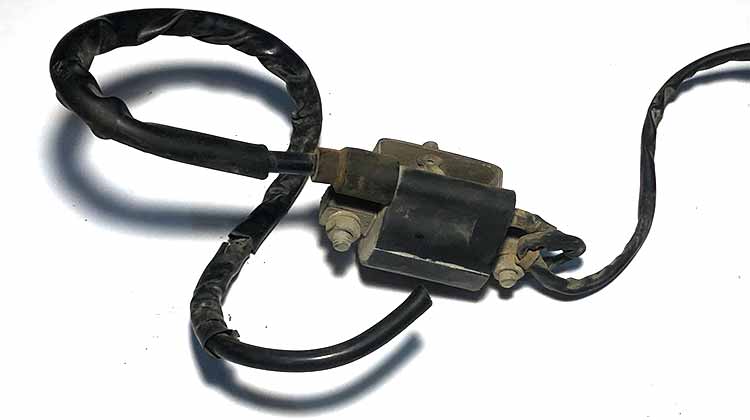
Locate the coils on your snowmobile. Find the plug cap and follow the wire, as it is connected directly to the ignition coil. Unscrew the bolts and disassemble the ignition coil from your snowmobile. Then disconnect the wiring harness of the ignition coil and test the primary and secondary coils separately using your multimeter. To test the primary coil, connect the terminals of the multimeter to the
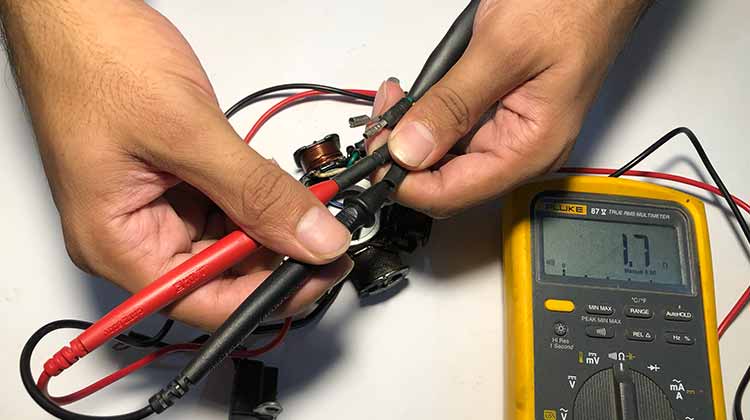
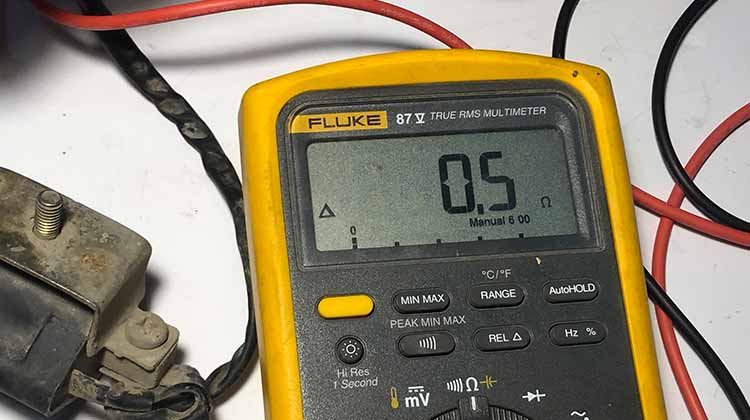
positive (+) and the negative (-) leads of the primary coil, respectively. Usually, the resistance of the primary coil lies between 0.4 to 2.0 ohms. The one I have is old and faulty because the resistance value does not lie between the ideal range. Again, refer to your snowmobile’s service manual to find the exact range for your snowmobile.
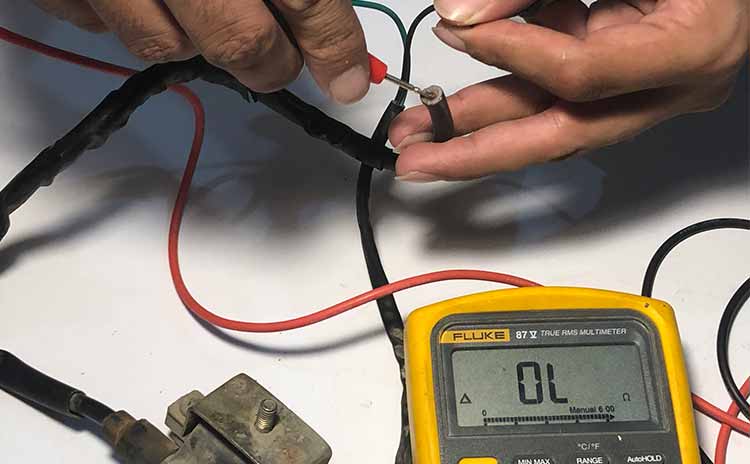
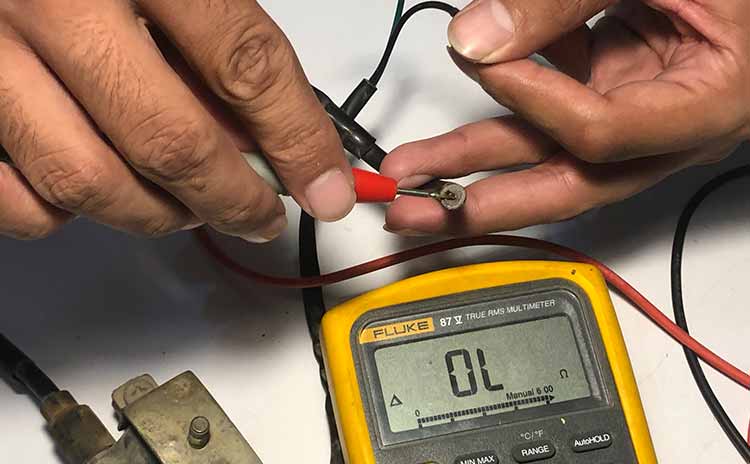
To test the secondary, connect the positive (+) lead of the multimeter to the +ve terminal of the ignition coil and connect the negative (-) test lead of the multimeter to the high voltage output ( to the spark plug). Usually, this value lies between 6-15 kiloohms. But the resistance value of your coil may vary, so match it with the values given in the service manual of your snowmobile. In my case, the meter is showing ‘OL’ means OPEN LOOP, so the secondary coil is broken, and that is why it is not showing any resistance value.
Also, check the ignition coil for any corrosion, dirt, or any kind of physical damage. Rust or corrosion can break the physical continuity of the coil and damage it.
An ignition coil can not be repaired. If any of your values do not lie within the range that is given in your service manual, you must change the ignition coil immediately.
Fix 3. Check magneto/stator and replace it.
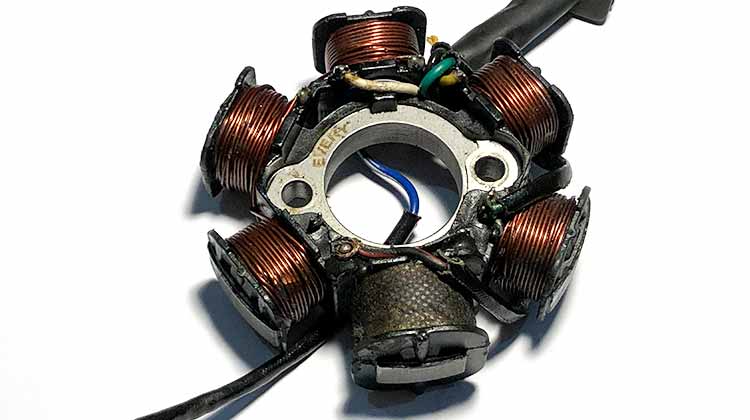
The magneto (magnetic coil) or stator is located under the flywheel. The flywheel has a series of magnets under it that rotates around the magneto. The magneto has 3-4 coils which are connected in series.
It is not easy to disassemble the magneto. You will need an extractor or puller and the correct size socket to remove it. You should only do it If you have all the tools and you know how to do it, or you will end up breaking it. After you have successfully removed the magneto, check for any physical damage which can be caused by harsh vibrations and weather effects.
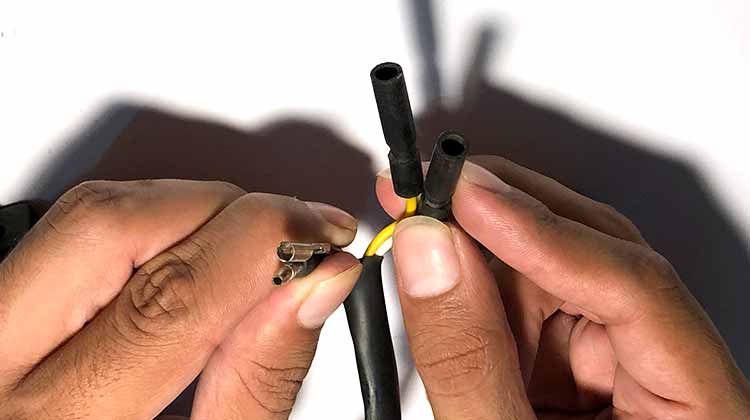
There are two pairs of wires coming out of the magneto. Take the multimeter, put it in continuity mode, and check the continuity between both wires separately. The multimeter will make a beep confirming that the coil is not broken. If the multimeter does not make a beep, then this indicates that the circuit is open, and the coil is damaged.
Note: Usually, the wires are in pairs with the same connectors. But, the color of the wires coming out of the magneto may vary. You can refer to the repair manual or search the part number on the internet to find the pairs of wire.
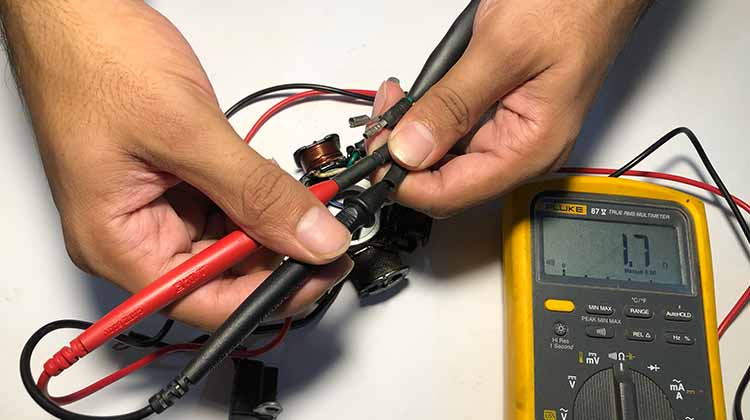
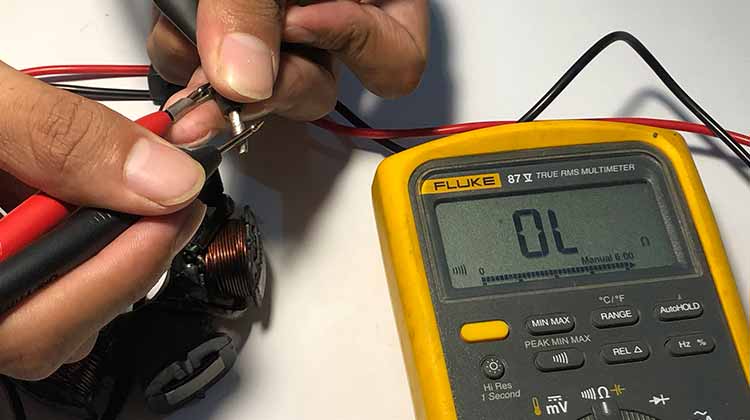
If both of the coils are good (when checked in continuity mode) then check the resistance of these coils. Take the multimeter and put it in the resistance or ohm mode. Connect the leads of the multimeter to the output wires of the magneto. You do not need to worry about the polarity as the value will be the same either way.
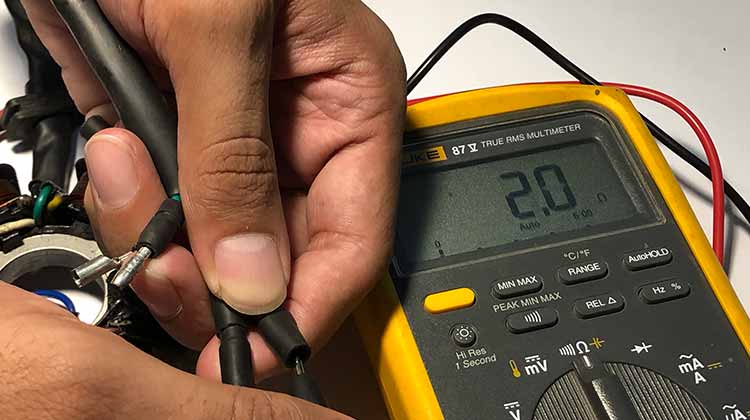

If the value of the output circuit (between yellow wires) is between 0.3 to 0.5 ohms, the output circuit is correct. If the value of the ignition circuit is between 18 to 21 ohms, the ignition circuit is working fine. If not, like the one I have, the only option is to replace the magneto.
9. The Worst Case – Low or No compression
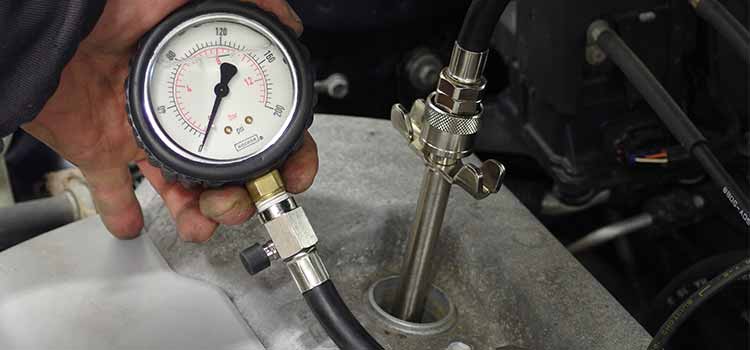
Believe me you do not want this to happen to your snowmobile. I have never faced this issue in my sled, but I have seen it happen to other people. The optimal compression is 120 psi, and below 110 psi, your snowmobile won’t start. It can happen due to quite a few reasons. Some of them, you can probably fix yourself, but they are not going to be easy.
These are some of the serious issues you might be having with your snowmobile that is causing the very low or no compression in your engine.
- Worn out piston rings: When there is less engine oil in the engine, there is less lubrication. So, the mechanical moving parts rub against each other, causing them to wear out.
- Scored or damaged piston: again with less oil and improper lubrication, the movement of the piston gets affected by friction. If the situation gets worse, the piston might even get seized.
- Reed valves: When the oil leaks into the combustion chamber and burns with the fuel, or the air used for combustion has impurities, the valves get damaged and cause less compression.
- Damaged gasket: The head gasket seals the engine from the top. It can get damaged due to high temperature or when the temperature of the engine rises quickly. The temperature can rise due to a faulty radiator, lack of coolant, or other failure of the cooling system.
These above-mentioned issues are not very common, but can occur occasionally, particularly if you do not take good care of your snowmobile, like changing the engine oil and air filter on time.
Fix: Call a mechanic! Seriously!
To diagnose or repair the engine and to deal with technical parts, you might need a mechanic. It takes a lot of expertise and specially designed tools to deal with the inside of the engine. I recommend that you visit the nearest repair shop or call the mechanic and keep your fingers crossed. Mechanics have a compression tester that can help determine whether your engine has proper compression. The mechanic can then deal with the problem accordingly.
I hope you were able to get your snowmobile started! If you run into other problems, like backfiring or only running on choke, check out these other posts:
Why Does Your Snowmobile Only Run on Choke?
In Conclusion…
This post has gotten very long already.
Congratulations if you have found the problem with your snowmobile and successfully fixed it. I am really, really proud of you! There are numerous reasons snowmobiles won’t start, and I (or anyone) certainly can’t think of them all. Feel free to let me know what I missed in the comments!
Hello,
I have a 600 carb renegade Rev XP skidoo. I went for a ride last week, ran fine, then all of a sudden my engine died and wouldn’t restart. Mind you the weather here is sometimes freezing, close to -40 degrees celcius. My partner has been trying to figure out what is wrong with it, but has trouble restarting after it died. He has cleaned the carbs, changed the fuel and gas also spark plug changes. I am in need of help, to go to the local mechanic is heavily expensive here.
I had a new rebuild engine from skidoo installd in my 2007 mxz 600 ho sdi put 80kl on sled and itstop working bacfired tryd to restart and will not star chequed the plugs and the plug on battery side looks like its burtn greyish looking the on on left side seems ok .I had full oil antifres extra oil in gas tank for break in period done by mecanick is the motor blown up, ps im desperate for advise.
Hey there, I rebuilt 82 indy air cooled, and I been trying everything to keep it running but it just won’t. What I found was alot of oil and grime that keeps the plugs from firing. Ill clean everything and replace, it’ll run for maybe 5 minutes then die out. Plugs never get soaked with gas ether but I did the carbs 5 times. I’m thinking of tearing all apart cleaning everything including crank. And run 2 stroke first then hook up oiler after break in. I did not run 2 storke for the first fire up.
Hi Joel, I hope you are enjoying the snow season.
An 82 indy is an old engine that needs reasonable Maintainance. But as for your situation, there could be some possibilities:
Usually, there are carburetor and ignition issues. It is rare when oil causes fouling.
Check the ignition coils and the stator. Also, check all the wiring from stator to ignition coil and from the ignition coil to the spark plug. And don’t forget the plug cap.
Make sure you are not using automobile oil.
Check the oil pump lines. In old engines, this is a common issue. You can solve it by readjusting the oil pump.
Check the plugs are good and the plug washers too. They might look new and be faulty from inside at the same time.
Make sure your engine is not running rich (more fuel and less air).
If there is too much oil, there is a chance that the piston rings are not properly adjusted, and they might be leaking some oil.
There might be a bent or damaged valve.
The piston or the piston-cylinder might cause this issue if you have got them polished for a rebuild.
I hope you find the solution soon and enjoy snowmobiling.